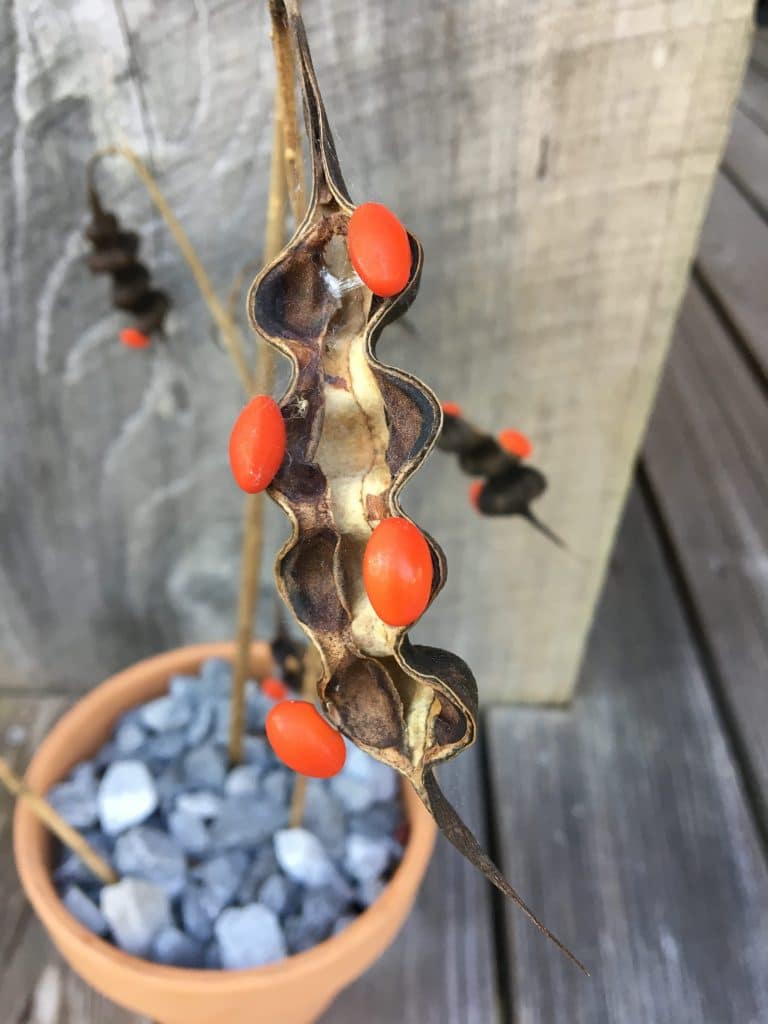The migration of Ruby-throated Hummingbirds in mid to late spring is also a time to see and enjoy the many nectar-producing flowering plants that feed them on their journey. Mamou, also known as Coral Bean, is one of my favorites and does more than just feed hummingbirds. This plant also has a rich tradition in Cajun culture. If you look up the word “mamou,” it literally means Coral Bean. It is also the name of a small town in south Louisiana that defines the northern reaches of Cajun Country. But Coral Bean (Erythrina herbacea) is not just a Louisiana native: it can be found growing from Florida to Texas and north to Arkansas and North Carolina.
My story with this plant dates to my youth and the tradition amongst the older generation of Cajuns to have a Mamou plant growing somewhere in your yard. Mamou was one of those must-have plants, not to feed birds, but to treat colds and other respiratory problems. Despite warnings about the poisonous nature of this plant in any book or source you choose to look, Cajuns used all parts of this plant medicinally. Many of my friends have determined that my level of “crazy” is in large part due to this tradition, but I will leave that for another story.
My intent here is not to advocate using Mamou as medicine, but the tradition must have merit somewhere in the past when I suspect Cajuns and other “transplants” to the region learned about the value of native plants from Native Americans. In any case, my Mama had Mamou in her yard and a bottle of dried Mamou seeds ready, just in case. I still have the last small bottle of beans that she saved for me, just in case.

But I digress because this story is about the role that the red flowers of Mamou, I mean Coral Bean, serve as a source of nectar for hummingbirds in late spring. This timing coincides with the pulse of migration for the millions of hummers that are returning from wintering grounds in South America, heading to their summer breeding grounds that stretch into southern Canada. Hummers are believed to be the primary pollinator of Coral Bean, having the means of reaching into the long tubular flowers.
Once pollinated, the bean pods emerge to grow from three to four inches long. In late summer, the drying pods split open to reveal the bright coral-colored beans that remain strongly attached to the pod for some time. The dried stems and pods make for interesting dried arrangements. And although the flowers in spring and the pods in fall are striking, the foliage of Coral Bean has its merits as well. The trifoliate leaves arranged along the long drooping stems add interesting texture to the plant and the landscape. Do watch out for the curved spines on the leaves and stems.
Watch for these striking spring bloomers along our roadsides and woodlands and consider putting one in your landscape. Although not readily available from nurseries, the large tubers of Coral Bean are easily transplanted in fall. Full sun is ideal to encourage maximum flowering, but partial shade is good as well. Help feed hummingbirds and add color and texture to our landscape with Mamou.
Hope to see you all in our great outdoors!!!